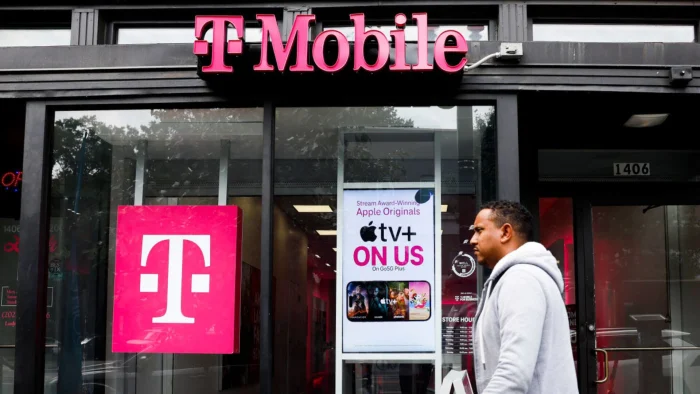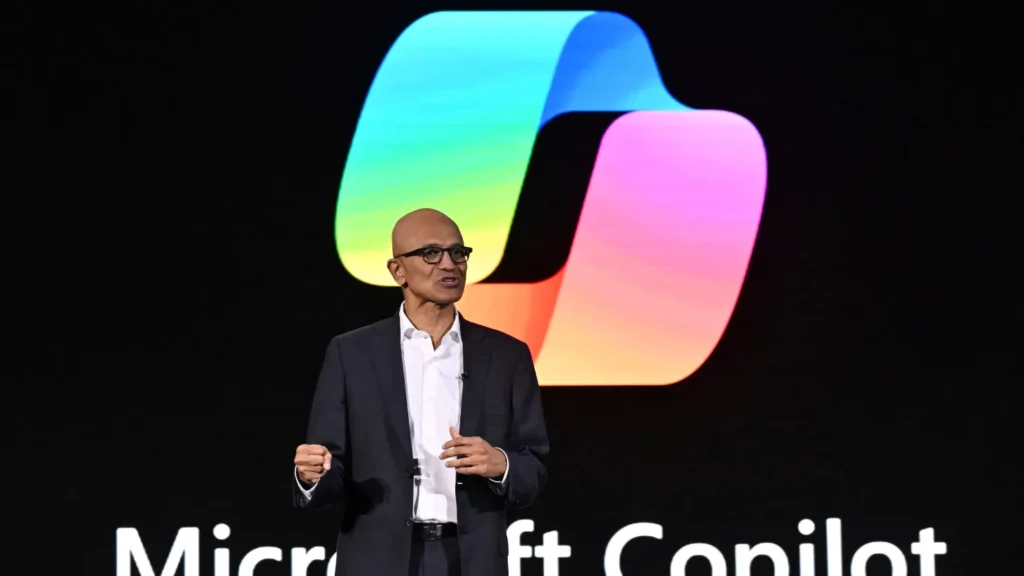In a bold and unexpected move, T-Mobile has launched a new strategy designed to lure customers away from its top competitors, including Verizon and AT&T. This strategic shift isn’t just another price war or promotion; it’s a calculated play that blends aggressive incentives, innovative tech solutions, and bold marketing to position T-Mobile as the undisputed choice for mobile users in the United States. In this blog, we delve into what this strategy entails, why it matters, and how it could reshape the telecom industry.
The Competitive Landscape in U.S. Telecom
The U.S. telecommunications landscape in 2025 is characterized by intense competition, rapid technological advancements, and evolving consumer demands. Major players like Verizon, T-Mobile, and AT&T are at the forefront, each striving to expand their market share through innovations in 5G deployment and broadband services. T-Mobile, for instance, has leveraged its merger with Sprint to accelerate 5G coverage, particularly in rural areas, challenging the traditional dominance of its rivals.
The market is also witnessing significant growth, with projections indicating an increase of USD 123.8 billion between 2024 and 2029, driven by heightened broadband demand and the proliferation of mobile data usage. This growth is further fueled by the entrance of non-traditional competitors like Elon Musk’s Starlink, which is rapidly gaining subscribers through its satellite-based internet services, particularly in underserved rural regions.
Additionally, the industry is experiencing consolidation, exemplified by the recent $21.9 billion merger between Charter Communications and Cox Communications, aiming to strengthen their position against wireless carriers encroaching on broadband territory. As the telecom sector continues to evolve, companies are focusing on expanding their infrastructure, embracing emerging technologies, and adapting to shifting consumer preferences to maintain a competitive edge.
What Makes T-Mobile’s New Strategy “Unexpected”?
T-Mobile’s latest move diverges from traditional tactics such as temporary discounts or limited-time offers. Instead, the carrier is leveraging a multi-pronged strategy focused on long-term value, advanced network performance, and customer experience. Here’s a breakdown of the key components:

“Easy Switch” Program for Frustrated Customers
T-Mobile has introduced a frictionless switching program, dubbed “Easy Switch,” which allows users to port their numbers and transfer plans in just minutes via a dedicated mobile app. This eliminates the common pain points of switching carriers, such as dealing with store visits, SIM changes, and paperwork.
Features of Easy Switch:
- App-based onboarding
- eSIM activation for compatible devices
- Real-time customer support
- Up to $650 in termination fee coverage
Contract Freedom: Paying Off Competitor Contracts
To further sweeten the deal, T-Mobile is offering to pay off existing contracts and device balances for customers switching from other carriers. This initiative directly targets users locked into long-term contracts and encourages them to switch without financial penalties.
Exclusive Benefits via T-Mobile Tuesdays
T-Mobile is enhancing its popular T-Mobile Tuesdays rewards program, which offers weekly perks such as free food, discounts, and subscriptions. New users who switch carriers gain immediate access to:
- Free MLB.TV subscriptions
- Paramount+ streaming access
- Discounted travel deals and concert tickets
These lifestyle-oriented perks resonate with younger demographics who seek more than just connectivity from their mobile provider.
5G Coverage Expansion and Speed Enhancements
T-Mobile continues to expand its 5G Ultra Capacity network. According to independent tests, T-Mobile now leads in both 5G speed and availability in the U.S., with coverage reaching over 325 million people.
- Median 5G download speed: 245 Mbps (as of Q1 2025)
- Leading in rural 5G deployment
- Integration with smart devices and home internet services
This performance edge helps T-Mobile market itself as the most technologically advanced wireless provider.
AI-Powered Customer Service
Another innovation lies in AI driven customer service solutions. T-Mobile has integrated advanced natural language processing into its support channels, allowing for real-time issue resolution and predictive service recommendations.
- Reduced average call wait time by 75%
- 24/7 AI support across mobile, web, and app
- Human agent backup for complex issues
This move reflects a broader industry trend towards automation but executed in a user-friendly, scalable manner.
Why This Strategy Matters
In the highly competitive U.S. telecom market, strategic differentiation is not just beneficial it’s essential for survival and growth. With major players like AT&T, Verizon, and T-Mobile battling for dominance, each move in pricing, technology, and customer engagement becomes critical. The strategy to invest in 5G, expand rural broadband, and pursue aggressive customer acquisition isn’t arbitrary it’s rooted in the pressing need to stay relevant in a landscape driven by rapid innovation and shifting user expectations.
This strategy matters because consumer behavior is evolving. Today’s customers demand faster speeds, lower latency, broader coverage, and value-added services all at competitive prices. Telecom companies that prioritize infrastructure investment, customer service, and strategic partnerships are better positioned to meet these expectations and build lasting loyalty.
Moreover, emerging competitors like Starlink are challenging traditional models by offering high-speed satellite internet in underserved regions. This disrupts the status quo, forcing legacy providers to either innovate or risk obsolescence. Strategic responses, such as mergers, tech upgrades, and bundled services, are critical to defending market share and capitalizing on new opportunities.
Additionally, regulatory shifts and federal investments in broadband infrastructure demand agile strategies. Companies that align with national connectivity goals can tap into funding and public goodwill, while those that lag may be penalized.
Ultimately, this strategy matters because it ensures long-term viability, growth, and competitiveness. In a sector marked by constant disruption, strategic foresight is the difference between leading the industry and falling behind.
Impact on Competitors
Verizon
Verizon’s stronghold has always been reliability. However, T-Mobile’s expanding 5G footprint and speed superiority put pressure on Verizon to defend its position. Furthermore, Verizon’s traditional pricing structures now appear outdated against T-Mobile’s more flexible plans.
AT&T
AT&T, with its bundling strategy, now faces a user experience and value-based challenge. T-Mobile’s perks and transparent pricing make AT&T’s offerings seem overly complex.

MVNOs and Smaller Players
Smaller players and MVNOs (Mobile Virtual Network Operators) like Mint Mobile and Boost Mobile are also impacted. T-Mobile’s aggressive pricing and rewards could cannibalize this market, especially as it offers more value with lower friction.
Real-World Customer Reactions
Social media has been abuzz with praise from users who switched via Easy Switch, citing simplicity, value, and the overall experience. Reddit threads and Twitter (now X) posts show increasing interest and satisfaction from former Verizon and AT&T customers.
Example Testimonials:
- “I switched from AT&T and T-Mobile paid off my phone. Process took 15 minutes on the app. Loving it so far.”
- “The MLB.TV perk sealed the deal for me. I was on the fence but glad I made the jump.”
Expert Opinions
Industry analysts are also weighing in. According to telecom analyst Mark Delaney:
“T-Mobile is turning the customer acquisition model on its head by removing friction and rewarding loyalty from Day 1. It’s no longer a race to the bottom on price but a race to the top in experience.”
Futurum Research also notes that T-Mobile’s investment in AI and digital onboarding represents “a significant edge” that will be difficult for legacy telecoms to replicate quickly.
Potential Risks and Challenges
While the strategy is innovative, it is not without risks:
- Operational Costs: Paying off competitor contracts and offering rewards increases short-term costs.
- Sustainability: Maintaining high reward value and service levels over time may strain resources.
- Customer Support Scaling: As users migrate, the AI customer support and backend systems must scale without compromising quality.
What Customers Should Consider Before Switching
If you’re considering jumping to T-Mobile, here are key questions to ask:
- Is your device compatible with T-Mobile’s eSIM or 5G network?
- Are you currently in a locked contract, and how will the buyout work?
- Which perks matter most to you streaming, travel, or speed?
- Does T-Mobile offer coverage in your local area?
These considerations will help determine whether the switch will truly benefit you.
Will This Strategy Redefine the Industry?
Yes, this strategy has the potential to redefine the U.S. telecom industry by reshaping how services are delivered, who gets access, and what customers expect. As telecom giants double down on 5G expansion, rural broadband deployment, and customer-centric innovations, they’re not just fighting for market share they’re reshaping the rules of competition.
The push for nationwide 5G coverage is enabling a new era of connectivity, supporting everything from autonomous vehicles to remote surgeries. By prioritizing infrastructure and technology upgrades, telecom providers are setting the stage for next-generation digital experiences. This isn’t just about faster internet it’s about transforming entire industries through connectivity.
Moreover, by aggressively targeting underserved areas, telecoms are addressing long-standing digital divides. This democratization of access not only expands their customer base but repositions them as essential service providers, much like utilities.
Meanwhile, competitive pricing strategies, content bundling, and flexible plans are pressuring traditional models and raising the bar for what consumers expect. As satellite internet providers and tech companies enter the space, traditional telecoms must innovate to stay ahead.
In short, this strategy doesn’t just respond to industry change it drives it. If executed successfully, it could fundamentally redefine how telecom services are conceived, delivered, and valued.
















